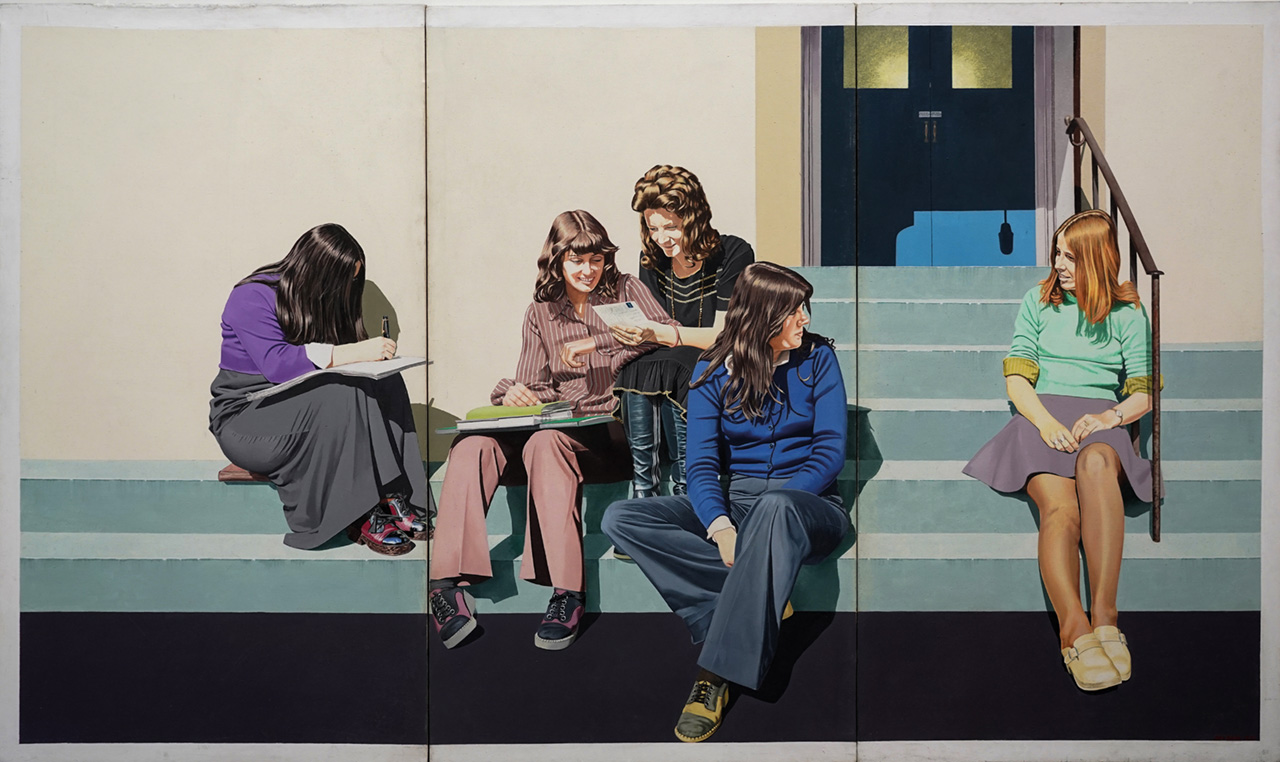The realist of friends
The four Merseyside artists whose work features in a new exhibition were often depicted as realists but, as the sole surviving member of the group points out, they had very different styles
In the 1960s four young artists were teaching at the Liverpool College of Art. They had varying backgrounds and styles but were part of an energetic art scene in the city out of which each became recognised in their own right. Now, once again, John Baum, Maurice Cockrill, Adrian Henri and Sam Walsh are being exhibited alongside each other.
“We were only a small department in the college and we were based in a separate building, so it wasn’t a movement of painting but we were colleagues who were friendly,” says Baum, the only one surviving of the four. “We had a lot of respect for each other and a lot of humour – that was big element. I remember we were always bloody laughing.”
Born in Wales, where he is now retired to Anglesey, though still painting, Baum studied at the Slade School of Fine Art before moving to Liverpool in 1965, where he stayed for over 20 years. Cockrill had studied in Reading, Walsh at Dublin College of Art and Birkenhead-born Henri at Durham University.
“Adrian and I got on really well. He was the one who got around because he was doing his poetry readings and all that stuff, so he lived a very separate life,” Baum says of his colleague who founded poetry-rock group the Liverpool Scene and was one of three poets in the best-selling anthology The Mersey Sound, along with Brian Patten and Roger McGough.
Cockrill would perform alongside Henri and Patten. Baum would go on to paint Cockrill in An Afternoon at Windermere House, where McGough lived, around the corner from Baum’s studio in Toxteth.
“Maurice was sitting outside in the garden with Caroline, his kind of girlfriend at the time. They were sat there and I said: ‘I like that.’ Once I did that, and it was shown, people wanted paintings of their houses.”
Baum also recalls Walsh fondly. “I used to give him a lift to work in the mornings, so we got on… Sam had always been the Irishman that he was – working on figures and he was also into celebrities. He did paint Paul McCartney and he called the painting Mike’s brother, because we knew him well.”
Buoyed by the success of the Beatles, Baum recalls a “vibrancy” among artists and other creative people at that time in Liverpool. Lots of people the artists worked with at Liverpool College of Art remembered John Lennon’s time there, and his friend, life model June Furlong. Baum recalls one student, who was also a talented musician, bringing a friend to class regularly.
“I didn’t mind but when it comes to having to do something I said to him: ‘Listen, it’s your life. You decide what you want to do – do you want to be a musician or an artist?’ He chose art and his visitor went away. It turns out it was Freddie Mercury. I thought bloody hell, did I stop this guy from being in Queen?”
The exhibition is curated by art historian and Henri’s partner Catherine Marcangeli, and presents work from artists’ estates, private collections and galleries including the Walker, the Williamson, the Atkinson and universities.
Despite their different styles, in the 1970s Baum, Cockrill, Henri and Walsh were often exhibited together under the banner of realism, or what Baum called “the likeness of things”.
“Observation and precision are tremendously important,” he says. “It’s just a matter of looking and seeing the spaces between things, the direction of a line. I’m a bit obsessive – some people think it’s tedious but I don’t. It’s the beauty in the everyday. The ordinary and the understated become more poignant.”
The four artists depicted people, objects and places in this clear crisp manner, and were sometimes described as photo-realist in reference to the movement then evolving in the US.
“I’d always been a bit of a mid-Atlantic guy. I was always looking that way, and I lived on the coast here. I’m not middle England, you know, I don’t fit that well so I did what I wanted to do,” says Baum. “I’ve always been passionate about what I do and nothing, in a strange way, has stopped me doing it.”
While they never discussed banding together as such, Baum says he felt there was an unspoken support for one another as fellow artists outside London.
“There was no sticking together – we just knew that we were,” he says. “You felt you were different. You felt you were outside. I didn’t mind that. I’d been in London, for heaven’s sakes – I spent five years there and I had no wish to go back.
“Adrian would be out and about with his poetry all over the country, Sam would if the opportunity came. Maurice was the one who chased it more than any of us. I just took what came really.”
The Likeness of Things: Baum – Cockrill – Henri – Walsh is at Kirkby Gallery until July

Leave a reply
Your email address will not be published.